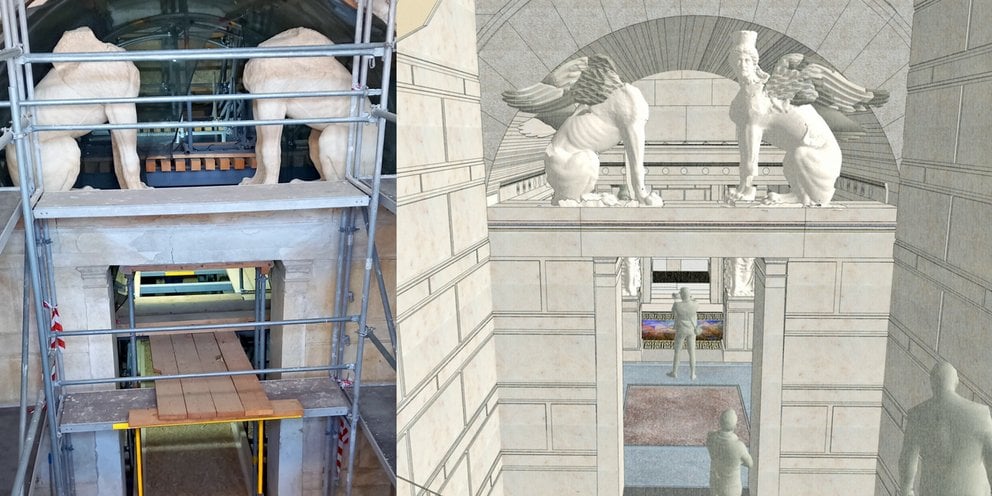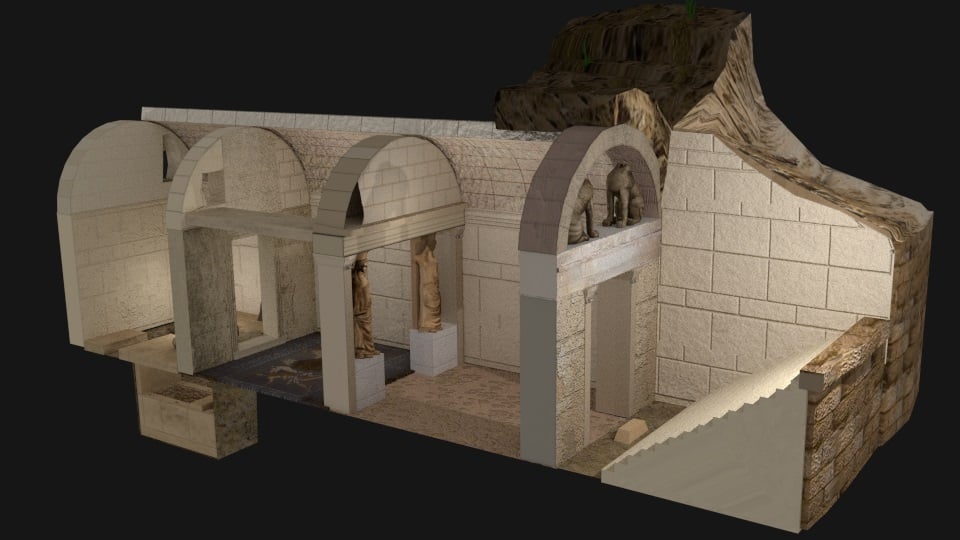
The Amphipolis Tomb, or Kasta Tomb, in northern Greece has captivated both archaeologists and history enthusiasts worldwide since its discovery in 2012. The question of who is buried there remains a mystery.
The Amphipolis Tomb is the largest burial mound ever discovered in Greece and by comparison dwarfs that of Philip II of Macedon, father of Alexander the Great, in Vergina.
In April 2023, after years of restoration work, Greece partially opened the monument which can be visited by specific groups of people, such as scientists, researchers, educators, and tour operators.
It will open to the general public in 2027 five years behind schedule when all the necessary infrastructure, restoration, and regeneration of the surrounding area will have been completed.
The site is believed to date back to the late 4th century BC, during the reign of Alexander the Great or shortly after his death.
It displays remarkable craftsmanship and intricate architectural features that indicate an individual of great importance. The tomb’s strategic location near Amphipolis, a significant ancient city, also suggests its connection to prominent figures of the time.

Remains of five people discovered in the Amphipolis Tomb
The first excavations at the mound in 1964 led to the exposure of the perimeter wall, and further excavations in the 1970s uncovered many other ancient remains. The inner tomb was first discovered in 2012 and entered in August 2014.
In early 2015, the Ministry announced the discovery of the remains of five individuals in the third chamber, the main burial chamber, sparking excitement in the media and intense scholarly debate among archaeologists and historians.
The barrel-vaulted tomb, looted in antiquity, contained the skeletal remains of a woman over 60 years of age, found at the bottom of the box-shaped “cist” grave in the floor, as well as the scattered bones of two men, aged approximately 35 and 45 respectively, a newborn infant, and the fragments of a cremated adult of indeterminate age and sex.
Only the elderly woman’s skeleton had a skull. Close investigation of the younger man’s bones revealed unhealed wounds, deep cut marks, suggesting he had met a violent death.
Despite extensive forensic analysis, the exact identity of the tomb’s five occupants remains a mystery.

Who is buried in Ampipolis Tomb: Potential candidates
Initial public speculation that, due to its size and cost of construction, it could be the tomb of Alexander the Great, was dismissed by experts when commenting on the published findings, as the available historical records mention Alexandria in Egypt as the final resting place of Alexander’s body.
Another hypothesis concerning the occupant of the Amphipolis Tomb is that it may belong to Hephaestion, a close companion of Alexander the Great.
Hephaestion, known for his military prowess and influential role within Alexander’s inner circle, was regarded as an important figure in the Macedonian Empire. Some argue that his burial in such a magnificent tomb would befit his status and the close bond he shared with Alexander.
The case for Olympias, Alexander’s mother, as the primary occupant of the Amphipolis Tomb is popular among scholars, largely due to the remains of a woman who died at approximately the same age as Olympias being the likely occupant of the cist grave in the main burial chamber.
The iconography of the decoration in the tomb also strongly suggests a high-status female occupant, sphinxes being symbols of the queen of Macedon, as well as a pair of caryatids (maidens) at the entrance of the second chamber.
Another compelling theory points to Roxana, Alexander the Great’s wife. Roxana, a Persian princess, held great influence and played a crucial role in Alexander’s political dealings. Her interment in a tomb of this caliber would be in accordance with her elevated position and significance in Alexander’s life.
Yet another possibility is that the Amphipolis Tomb may belong to a prominent member of the Macedonian royal family. With its lavish decorations and astronomical cost, the tomb could have been designed to honor one of the ruling dynasties of the time, such as the Argeads or the Antigonids.
Given the political climate and the prevailing practices of the era, it is reasonable to consider that the tomb was created as a tribute to a revered member of the Macedonian aristocracy.
The three chambers of the Amphipolis tomb

The tomb complex is surrounded by an almost circular wall 158m in diameter and 3m high made of limestone covered with marble from the island of Thassos, 60 km from Amphipolis.
The tomb consists of three chambers. In the first chamber, there are two sphinxes guarding the main entrance to the tomb. The floor is paved with pieces of white marble embedded in red mortar.
The second chamber is 4.5m wide, 3m long and around 6.5m high. The lintel leading to the second antechamber is supported by two caryatids. They each stand on a 1.4m high platform and are 2.27m tall.
The entire floor is decorated with a mosaic of expert craftsmanship, though it was never intended to be seen. It uses black, white, grey, yellow, blue and red pebbles and is framed with a meandering geometric pattern and a wave pattern on the inside.
The burial chamber is 4.5 x 4.5m and is separated from the second chamber by a double marble door carved to imitate wooden doors with fittings and nails.
The box-shaped tomb is embedded in the floor which is paved with ashlars. According to a report by the Greek Ministry of Culture, nails from a wooden coffin and decorative elements made of bone and glass remained from the burial in the otherwise robbed grave.
Ongoing archaeological investigations and scientific advancements provide hope for answers to the enigma of who was the occupant of the Amphipolis Tomb.
Modern techniques, such as DNA analysis, can offer invaluable insights by comparing genetic material found in the tomb to that of known historical figures.
By cross-referencing historical records and genetic data, it may become possible to make a conclusive identification of the tomb’s occupants.
See all the latest news from Greece and the world at Greekreporter.com. Contact our newsroom to report an update or send your story, photos and videos. Follow GR on Google News and subscribe here to our daily email!



